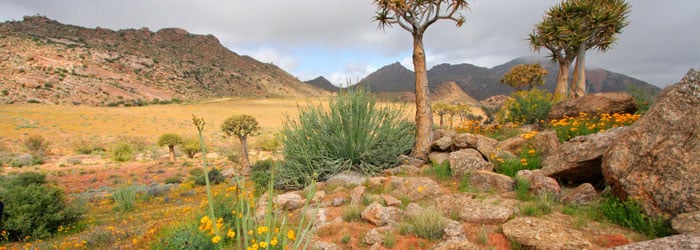News Bin - November 30, 2017
Bringing you the latest news, information, and resources from around the web. In the November 30th edition, read more about the following:
- Big Bird: A New Bird Species Has Evolved on Galápagos and Scientists Watched It Happen
- Google Street View Now Covers All South Africa's National Parks
- How Did This Weird, Super-Salty Pond Form in Antarctica?
- Mexico Designates North America’s Largest Ocean Reserve
- How Nicaragua Is Becoming a Renewable Energy Paradise
Big Bird: A New Bird Species Has Evolved on Galápagos and Scientists Watched It Happen
For the first time, scientists have been able to observe something amazing: the evolution of a completely new species, in the wild, in real-time. Genomic sequencing and the analysis of physical characteristics have confirmed the new species of Darwin's finch, endemic to a small island called Daphne Major in the Galápagos.
Google Street View Now Covers All South Africa's National Parks
Thanks to 200+ volunteer hikers, you can now experience 170 trails within South Africa’s national parks and reserves through Google Street View. All 19 national parks are represented, along with 17 nature reserves, and other notable areas of cultural, historical, or natural significance – including seven of South Africa’s eight UNESCO World Heritage Sites.
How Did This Weird, Super-Salty Pond Form in Antarctica?
The “Don Juan Pond” sits only a few inches deep in the Antarctic desert, and because of its high salt content, stays completely liquid despite the frigid temperature (minus 58 degrees Fahrenheit). Since its discovery in 1961, scientists have tried to explain this geochemical mystery – and furthermore, use it as a model for understanding its closest terrestrial analogue: Mars.
Mexico Designates North America’s Largest Ocean Reserve
On November 24, Mexico President Enrique Peña Nieto designated the Revillagigedo Archipelago a protected area and national park, making it the largest marine reserve in North America. Surrounding four volcanic islands in the Pacific, the area is uninhabited by people, and home to four species of sea turtles, more than 37 species of sharks and rays, and at least 366 species of fish – dozens of which are found nowhere else on Earth.
How Nicaragua Is Becoming a Renewable Energy Paradise
Due to its precarious location between the two oceans – and their potential extreme weather events – Nicaragua is the fourth most vulnerable country to climate change. In the aftermath of Tropical Storm Nate, the country is turning further toward renewable energy projects. “Ten years ago this country was generating 85 per cent of its electricity from fossil fuels,” says César Zamora, the chair of Nicaragua’s Chamber of Energy. “Now it’s 52 per cent renewables.”


